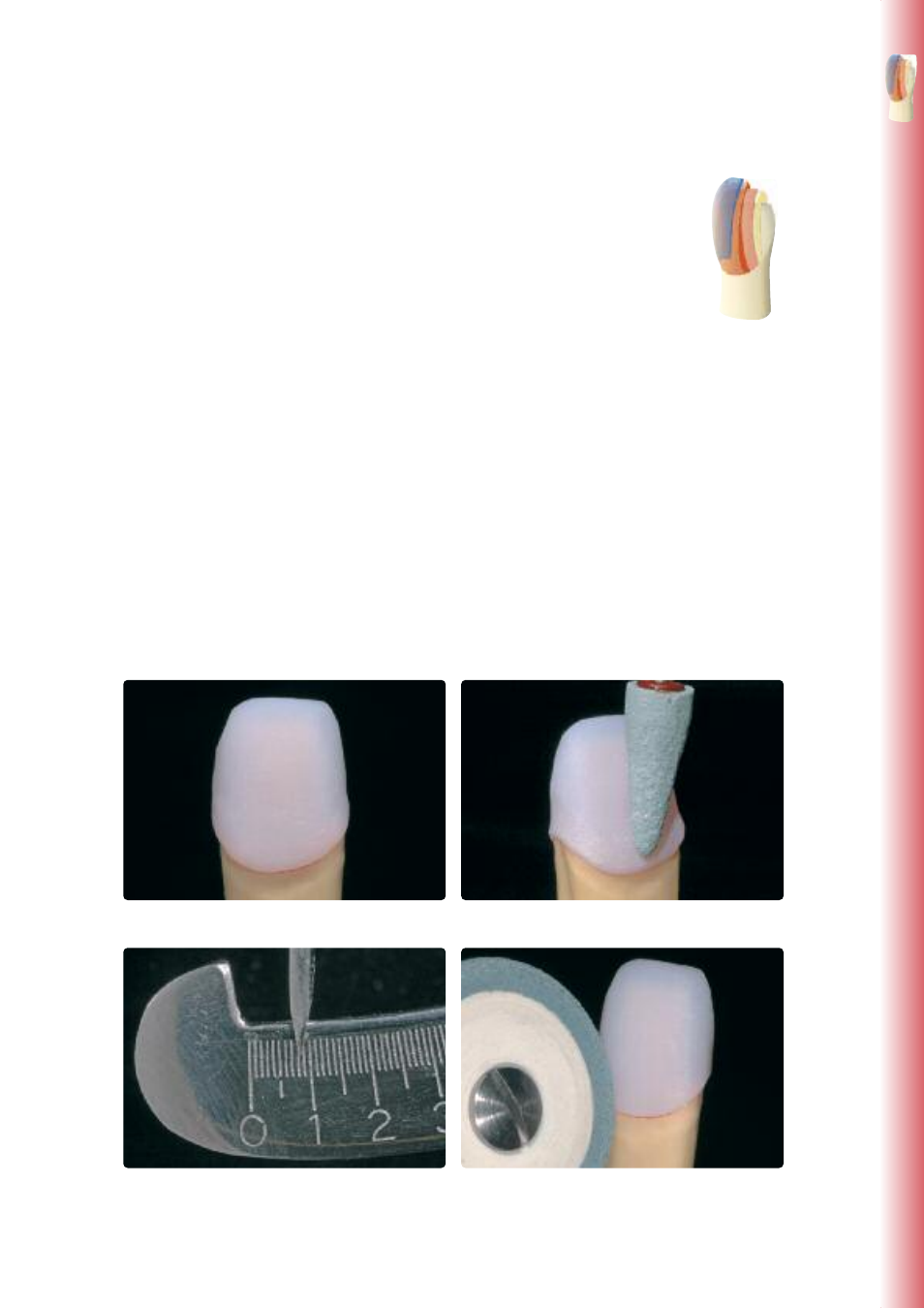E.max, Layering technique, Finishing and preparation for crystallization – Ivoclar Vivadent IPS e.max CAD Labside User Manual
Page 45

45
L
a
y
e
ri
n
g
Te
ch
n
iq
u
e
e.max
®
CAD
–
Layering Technique
IP
S
In the layering technique, the IPS e.max Ceram layering materials are fired onto the framework made of
IPS e.max CAD MO. This enables very individualized design possibilities. The opacity of IPS e.max CAD MO
permits the design of highly esthetic restorations even on discoloured dies as well as metal core build-ups or
Ti abutments.
Finishing and Preparation for Crystallization
It is of critical importance to use the correct grinding instruments for finishing and adjusting IPS e.max CAD. If unsuitable
grinding instruments are used, chipping of the edges and local overheating may occur (please observe the corresponding
Ivoclar Vivadent Flow Chart ”Recommended grinding tools for IPS e.max glass-ceramics”.
Observe the following procedure for finishing IPS e.max CAD restorations:
– Carry out adjustments by grinding of milled IPS e.max CAD restorations while they are still in their pre-crystallized (blue)
state whenever possible.
– Only use suitable grinding instruments, low rpms and light pressure to prevent delamination and chipping at the edges
in particular.
– Overheating of the glass-ceramic must be avoided.
– The frameworks are tried in on the dies and carefully finished.
– Make sure that the minimum thicknesses are maintained even after the minor adjustments.
– Always clean the framework with ultrasound in a water bath or blast with the steam jet before crystallization.
– Do not blast the framework with Al
2
O
3
or glass polishing beads.
Try in the milled framework on the model and check fit
Finish the framework with suitable grinding instruments
Make sure that the minimum thicknesses are maintained even after finishing
Finish the margins with suitable grinding instruments
